Jin Memorial Temple
Jinci Temple is located in Jinci Town, Jinyuan District, Taiyuan City, Shanxi Province. It was originally called Jinwang Temple and was first named Tang Shuyu Temple. It was built in memory of Tang Shuyu, the founding Prince of Jin State (later pursued as King of Jin) and Jiang Hou, his mother and queen. It is the earliest imperial garden in China and is the ancestral temple of Jin Dynasty. There are dozens of ancient buildings in the temple, which have the characteristics of Chinese traditional culture.
Among them, the image of Nanlaoquan, the portrait of maid and the portrait of the Virgin Mother are known as the "three wonders of Jin Temple" . In March 1961, Jinci Temple was announced by the State Council as the first batch of national key cultural relics protection units, and in 2011 was announced as the first batch of national AAAA-level tourist attractions.
Evolution of construction
Western Zhou Dynasty
In the Western Zhou Dynasty (11th century - 771 years ago), King Ji of Zhou Cheng recited his brother Ji Yu, who was called Tang Shuyu. Its feudal land is now in Yicheng, Shanxi Province. Later, a branch of Shuyu clan moved to Jinyang and built ancestral temples at the birthplace of Jinshui at the foot of Mount Xuangou, which is called Tang Shuyu ancestral temple. Yu's son, Xie, changed his name to Jin because of Jinshui in his territory.
Eastern Han Dynasty
Three years (144 years) of Han'an in the Eastern Han Dynasty, the Taiyuan Earthquake affected Jinci Temple.
Northern and Southern Dynasties
During the Tianbao period (550-559) of the Northern and Southern Dynasties, Emperor Wenxuan expanded the Jin Temple in Gaoyang to "build a large view of buildings and wear ponds". Reading desk, Wangchuan Pavilion, Liucup Pavilion, Yongxue Pavilion, Renzhixuan, Junfutang, Nanlaoquan Pavilion, Shanliquan Pavilion and so on were all built in this period. Repairs have been made from below the high seas.
Sui dynasty
In the six years of Sui Kaihuang (581-586), the Shresheng Health Pagoda was built in the southwest of the ancestral temple area to irrigate rice fields with Jinshui water, and it returned 41 Li in Zhou Hui.
Tang dynasty
In the 20th year of Tang Zhenguan (646), Taizong Li Shimin went to Jinci Temple to write the inscription "The Epitaph of Jinci Temple and Preface", and to expand it again.
Song dynasty
During the reign of Taiping and Xingguo in the Northern Song Dynasty (976-1983), Zhao Guangyi, the emperor of Taizong in the Song Dynasty, built large-scale civil works in Jinci Temple, and inscribed monuments when the renovation was completed.
During the reign of Tiansheng (1023 - 1032), Zhao Zhenyu of Song Renzong pursued Tang Shuyu as King of Fendong and built a magnificent Notre Dame Temple for Jiang, the mother of Tang Shuyu.
During the reign of Yuanyou and Shaosheng (1086-1098), Song Zhezhong cast iron men and built lotus flower terraces to make them magnificent. In the second year of Yuanyou (1087), Lu Ji, the head of Taiyuan Prefecture, and others offered six wooden carved Panlong carvings on the eaves and pillars of Notre Dame Hall and the seat of Notre Dame. In the fourth year of Yuanyou (1089), a cast iron man was cast in the southeastern corner of the Jinrentai (the existing cast iron man was cast in the fifteenth year of the Republic of China (1926). Shaosheng four years (1097), cast gold Taiwanese southwest corner iron man. Shaosheng five years (1098), cast gold Tai northwest corner iron man. The iron man in the northeastern corner was destroyed early and recasted in 1913, the second year of the Republic of China.
Song Huizong Chongningzhong (1102 - 1106) renovated the Notre Dame Temple and gave it the title "Cimiao". In the first year of Zhenghe (1111), the Miao Nationality Hall was rebuilt. Zhenghe eight years (1118), cast fish marsh flying beam iron lion pair.
In the eighth year of Jin Dading (1168), an additional dedication hall was built in Dadong, Feiling, to dedicate sacrifices to the Virgin Mother and Son. It has 3 breadths and 2 depths.
Yuan dynasty
From the ancestors of the Yuan Dynasty to the fourth year of the Yuan Dynasty (1267), the architecture of the Tang Shuyu Temple was rebuilt and the boundary around the Jin Temple was determined. Yi Yin wrote "Rebuilding the Story of the Eastern King's Temple in Fen Dynasty".
In the second year of Emperor Qing of Renzong of Yuan Dynasty (1313), Buddhist monk Hongzhi rebuilt Fengsheng Temple.
In the first year of Zhihe (1328), Emperor Ding of Yuan Tai rebuilt the Miao Nationality Hall.
From Emperor Shun of Yuan Dynasty to the first year of Zheng Dynasty (1341), Wang Sicheng was appointed to Hedong Shanxi Road (Xuanxiu Department), renovating Jin Temple. The following year, the Taiyuan earthquake affected the Jin Temple, which was to rebuild the Notre Dame Temple. Up to the third year (1343), the stone carving "Confucius'Step Trend Map" was placed in Tsinghua Hall.
the Ming dynasty
In the first year of Hongwu Ming Dynasty (1368), Yuhua Temple was rebuilt, with three main halls and three left and right supporting halls. In the second year of Hongwu (1369), the Virgin Mother was added as "the Virgin Mother of Wide Benefit and Ling Zhaoji". Hongwu three years (1370), the creation of Xianweng Pavilion, also known as the Red Pavilion.
In the 10th year of Yongle Ming Dynasty (1412), Buddhist monk Yuanjue came to Fengsheng Temple to build Guanyin Hall and cast the left bell of Notre Dame Hall. Fourteen years (1416), built the Shangsheng Temple, the main hall of three couplets, the East and West Palace with three pavilions. Yongle 21 years (1423), recast the iron head in the northwest corner of Lianhuatai.
Tomorrow in the first year of Shunyuan (1457), the right side of the Notre Dame Temple casting a bell. In the fifth year of Tianshun (1461), Shanxi Governor Mao Biao repaired the Jin Temple and inscribed the Rebuilding of the Jin Temple Monument.
In the 23rd year of Chenghua Ming Dynasty (1487), the Notre Dame Temple erected a monument to the Imperial Sacrifice.
Six years (1511) in Ming Zhengde, the Miao Nationality Hall was rebuilt. In the eighth year of Zhengde (1513), Tieren's tibia in the northwest corner was recast. Zhengde 15 years (1520), cast Haotian Temple bell.
In Jiajing of Ming Dynasty, Baihe Pavilion was built. In the eleventh year of Jiajing (1532), the dynasty established Jinxi Academy in the southeast corner of Jinci Temple. In Jiajing 27 years (1548), he built a reading desk and visited the Chuan Pavilion, Tang Shuyu Temple, Shanli Pavilion and Hard Old Pavilion. From forty to forty-one years (1561-1562) in Jiajing, the Notre Dame Temple and Fish Marsh Flying Beam were built in Ninghua Wangfu. Jiajing forty-two years (1563), the creation of jellyfish building.
In the first year of Longqing Ming Dynasty (1567), Gao Ruxing wrote "Rebuilding Jin Temple Records" and "Rebuilding Dongyue Temple".
During the Wanli period of the Ming Dynasty (1573 - 1620), Yuefang Tower and Zhonggu Tower were built in front of Xiandian Hall. Then on the east side of Huixianqiao, the gorgeous water mirror was rebuilt for the performance.
the Qing dynasty
In the first year of Emperor Kangxi in the Qing Dynasty (1662), Wangchuan Pavilion was rebuilt. In the twenty-fifth year of Kangxi (1686), Zhou Zhixian, Taiyuan, renovated Tang Shuyu Temple in Chun, and wrote an article about it. In the thirty-eighth year of Kangxi (1699), Luzu Pavilion was built. In the forty-eighth year of Kangxi (1709), Tang Shuyu Temple was restored. In the fifty-seventh year of Kangxi (1718), Fengsheng Temple was renovated to create Wai Fengxuan.
In the eighth year of Yongzheng (1730), Gao rebuilt the Taiyuanmiao Temple.
In the first year of Qianlong (1736), Juntian Platform was built. In the second year of Qianlong (1737), Sansheng Temple and Tongle Pavilion were rebuilt. In the twelve years of Emperor Qianlong (1747), the Shresheng Health Pagoda was rebuilt. In the 16th year of Qianlong (1751), Yang Eryou of Hanlin returned to the Jin Temple and devoted himself to the renovation of the Jin Temple. In the twenty-fifth year of Qianlong reinvention (1760), the ancestral temple of public transportation was rebuilt. In the 36th year of Qianlong (1771), Shanxi Governor Zhu Qi and Taiyuan ordered Zhou Kuan to rebuild Tang Shuyu Temple. In the thirty-eighth year of Qianlong (1773), Wenchang Palace, Qixian Temple in Jinshui and Lock Hongqiao were expanded. Qianlong 39 years (1774), repair fish marsh flying beam. In Qianlong forty-three years (1778), the White Crane Pavilion was built. In the fiftieth year of Qianlong (1785), Chaoyang Cave and Reading Platform were built. In the sixty years of Qianlong (1795), the Haotian Temple was expanded and the reading platform was rebuilt.
In the sixth year of Jiaqing (1801), the Jade Emperor's Pavilion and Sanqing Cave were repaired and the Guandi Temple was completed. In the fourteenth year of Jiaqing (1809), Jin Temple was completely renovated, including Lianchi, Shuixie, Feiling, Taiqiao Temple, Gongluzi Temple, Sansheng Temple and so on. Jiaqing 23 years (1818), repair Yuhua Temple.
In the fifth year of Daoguang (1825), Dongyue Temple was rebuilt. Daoguang 24 years (1844), renovation of Jin Temple part of the building.
In the fifth year of Xianfeng (1855), Tsinghua Hall was rebuilt.
Tongzhi two years (1863), the restoration of Fengsheng Temple.
In the first year of Guangxu (1875), Guangxu inscribed the inscription "Three Jin Dynasty Seals". In 1902, Liu Dapeng, a native of Guangxu, completed the manuscript of Jinci Ancestral Records. Guangxu 30 years (1904), Xiujin Temple to Fengxuan.
Republican China
In the six years of the Republic of China (1917), the ear-washing cave and the genuine interest Pavilion were built.
In the fifteenth year of the Republic of China (1926), the head of iron in the southeastern corner of Jinci Jinrentai was recasted.
In the 16th year of the Republic of China (1927), Rong Hongfa built Taoran Village Villa (Rong Jia Garden).
In the nineteenth year of the Republic of China (1930), Jianshi Fang "did not tie a boat".
new China
In 1954, the Zhibo Canal was built to rebuild the Chaohong Bridge.
In 1960, Wangchuan Pavilion was rebuilt, Miao Nationality Hall was rebuilt and Wenchang Palace was expanded.
In 1964, the gate of Jinci Temple and Wangchuan Pavilion were built and Lubao River and Santai Pavilion were renovated. In the same year, Tongle Pavilion was demolished and Shanxi painting and calligraphy studios were rebuilt.
In 1965, the old spring weir was expanded and the Nanhu Hall and the ship wharf of Jinci Park were built.
In 1975, Wenchang Palace was completely renovated.
In 1977, the Provincial cadre sanatorium returned 120 houses at Fengsheng Temple site.
In 1978, Jin Temple was renovated in an all-round way, with a flat land of 47845 square meters, and 22 households in the cultural relics area were moved out. A hexagonal pavilion was built in Nanshan of Wang Qiong Temple, a Zhibo Canal was renovated, a Shanli Spring canal was rebuilt, and Guandi Temple, Tang Shu Temple, Santai Pavilion and Jinxi Academy were renovated.
In 1980, new buildings were rebuilt at the site of Fengsheng Temple.
From 1980 to 1981, the tomb of Wang Lou Rui in Dongan County, Northern Qi Dynasty, excavated near Wang Guocun in Jinci Temple, contains nearly 200 square meters of murals, which are the earliest and most valuable historical treasures in China.
In 1981, the Tang Stele Pavilion was expanded. In the same year, the main buildings such as Yuhua Temple, Laojundong, Ruiyun Pavilion and Taoran Villa were repaired. The renovation of Jinci Park Yinma Spring Scenic Area and the construction of Royal Well Pavilion, Lotus Champs Elysees, Corridor and Archway were completed by 1989.
In 1991, Dong Shouping Museum of Fine Arts opened in Jinci Museum. The eight scenic monuments inside and outside Jinci Temple were carved and the monument corridor was built. Restoration of Jinxi Academy. Build Qiao Temple, the ancestor of Wang family in Taiyuan.
Protection of cultural relics
On March 4, 1961, the State Council announced the first batch of 180 national key cultural relics protection units, including Jinci Temple. It belongs to ancient buildings and historical Memorial buildings.
On March 21, 2002, the Standing Committee of Shanxi Provincial People's Congress promulgated the Regulations on the Protection of Jinci Temple in Taiyuan City.
On September 1, 2013, the Regulations on the Protection of Jinci Spring Areas approved by the 4th Session of the Standing Committee of the Twelfth National People's Congress of Shanxi Province came into effect.
On April 11, 2016, Taiyuan City Planning Network released "General Planning Plan for Jinci Town, Jinyuan District, Taiyuan City (2015-2030)".
Tourism information
Opening Hours
8:00-18:00 (April-October)
8:30-17:00 (November-March)
Ticket Price
The average price is 70 yuan per person. The scenic spot is based on the average price. It fluctuates within 20% range during the off-peak season, with a maximum of 72 yuan. For disabled persons, students and the elderly over 60 years of age, a half-price discount shall be granted on the basis of valid and legal documents; for children, active servicemen, revolutionary disabled soldiers and the elderly over 70 years of age, tickets shall be exempted; for group tourists organized by travel agencies, preferential fares shall be granted, and the specific range of preferential fares shall be set by the scenic spot itself.
Traffic hints
No ticket-selling bus No. 308, 856 and 804 leading to Jinci Temple in Taiyuan City, from 6:00 to 18:30 a.m., has a short interval of 15-20 minutes.
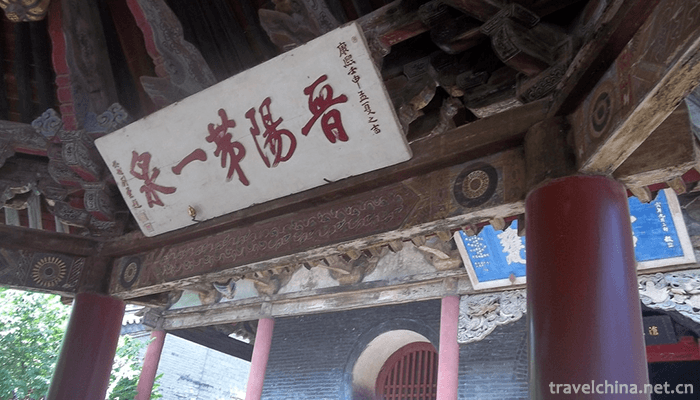
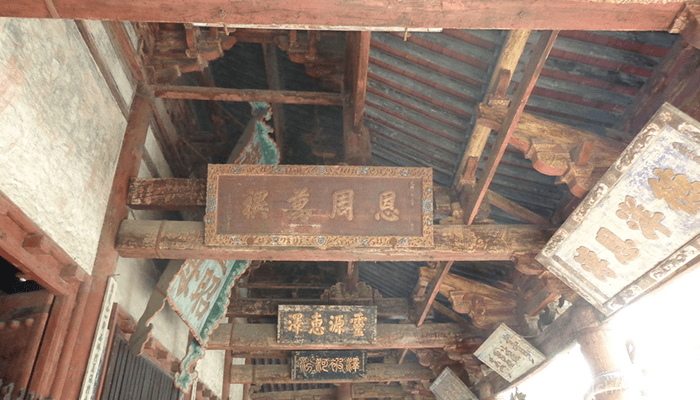
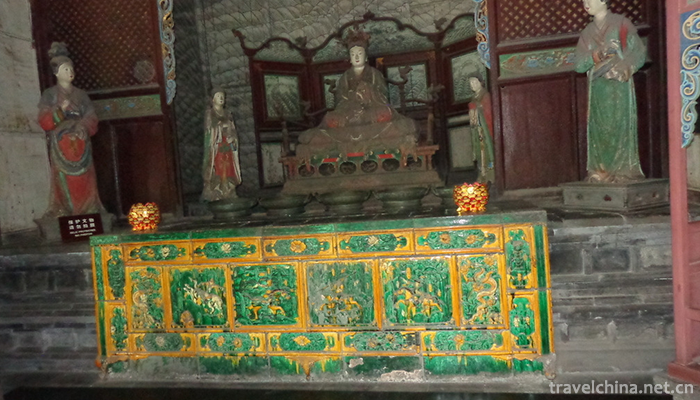
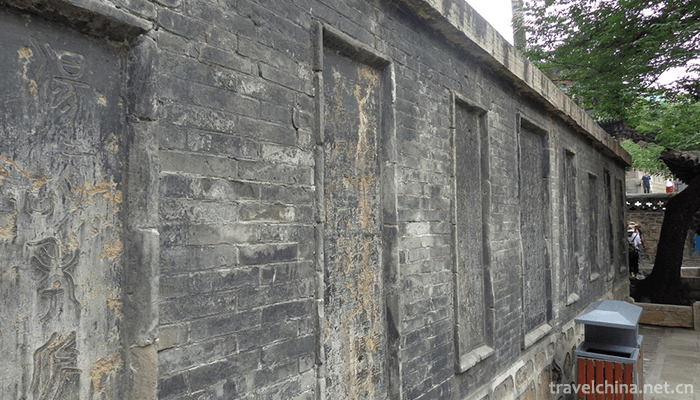


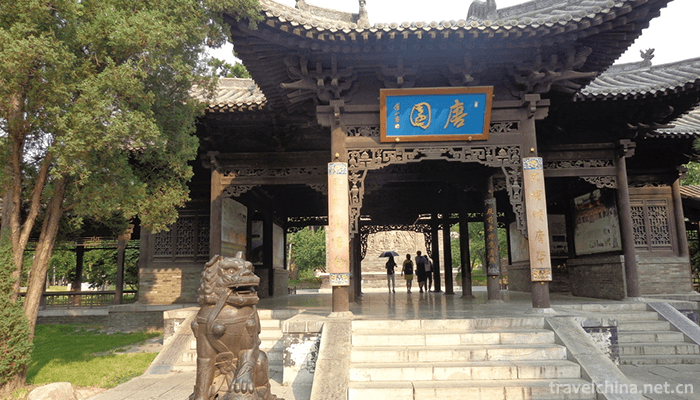

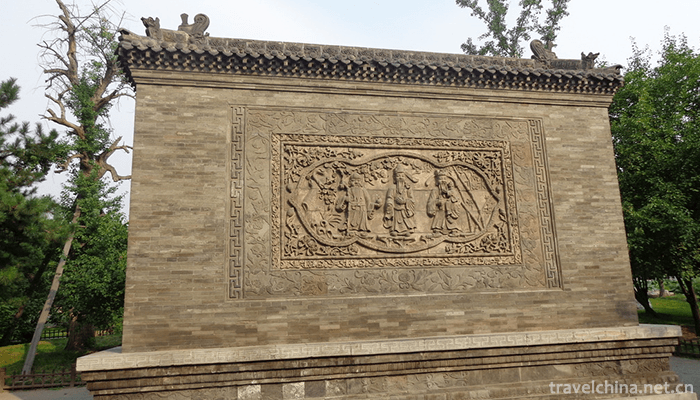
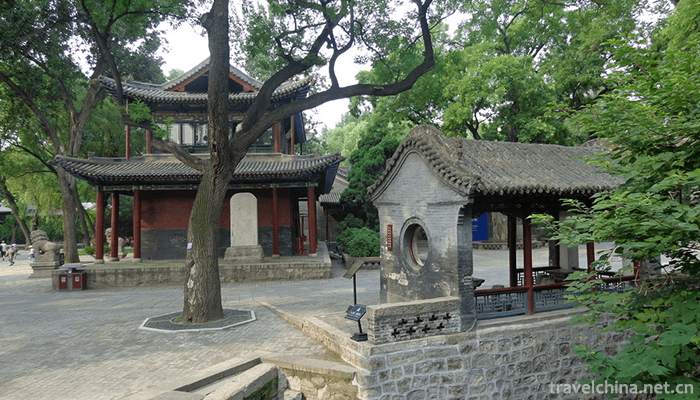
0 Questions
Ask a Question
Your email address will not be published.